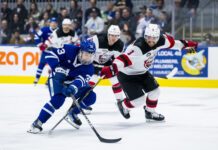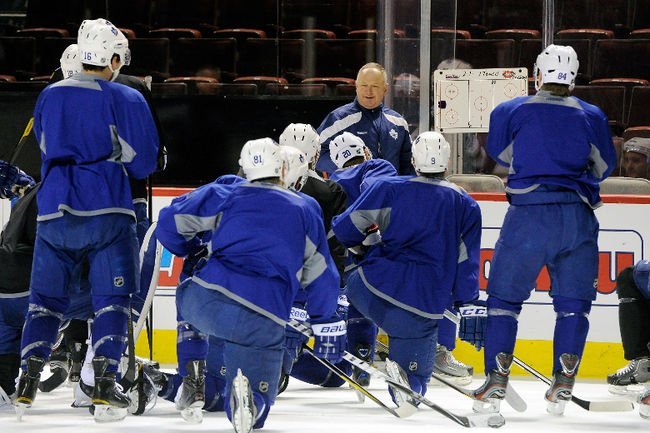This is the first of five reports I’ll be writing after each 10-game (and one eight-game) segment of the Leafs schedule, where I break down the team’s numbers in the key areas of even strength and special teams; all good factors to consider when you wager on NHL. Note: obviously, be weary of the small sample size in this first report.
[table “89” not found /]At the ten game mark, the Leafs have gone goal for goal at even strength. This isn’t awesome, but five teams did the same or worse and still made the playoffs last season – Chicago, Los Angeles, New Jersey, Washington and Florida (who were a measly 0.88 in 5-on-5 goals for/against). This is an early but significant improvement over the 0.86 figure they finished with last season. While overall goals against sits 20th league wide, the improved goaltending and, to some extent, team defense at 5 on 5 in the early going has taken the Leafs up to 2.90 GA/G from last season’s atrocious 3.16.
It’s clear as day that special teams are holding the 5-5-0 Leafs back. A penalty kill that gets punished too often when it’s on the ice is a recipe for disaster when the momentum turns on the team and a penalty is taken; you need a good PK to defend leads and close out wins. A better PK could help the Leafs win more than 50% of the games they score in first (3-3 record when scoring first in 6 of 10 games). The failure to capitalize on several powerplays, usually in frustrating fashion, can take an opportunity that should provide momentum and turn it into the morale-deflating opposite.
The most disappointing part of the special teams struggles is that, if the Leafs were merely league average with a man up or down, it would be a huge boost to a club that draws a lot more penalties than it takes. Team speed has been an asset for the Leafs for the past few seasons and it draws penalties while helping to avoid taking them if they keep their legs moving. The Leafs have been shorthanded just 32 times this season, the fourth fewest, and have “enjoyed” the second most powerplay opportunities with 56. Despite a whopping 24 more PP opportunities than times shorthanded, the Leafs have conceded three more goals with a man down than they’ve scored with a man advantage.
The penalty kill showed good signs very early, with Komarov and McClement seemingly adding some much needed defensive savvy to the forward pairs. The best PK teams usually have quite a bit of experience on their units. McClement adds some, but other than that, I’d argue the Leafs are icing a less experienced than ever set of PKers, especially in the last few games with the coaches rolling out three defencemen who were full time AHLers last season (Holzer, Fraser, Kostka). Carl Gunnarsson is missed here in recent times, not because the PK was great last season, but because he’s solid positionally (the Leafs’ D in front of and around the net have had some head-scratching moments the past few games) and played over 200 shorthanded minutes last season. One worry is that James Reimer, while looking much more like the Optimus Reim we knew and loved in 2010-11, has a historically bad save percentage at 4 on 5 and currently sits 40th among goaltenders with a .828.
The powerplay is a different animal with far fewer excuses available, especially coming off a season in which it finished tenth league wide. The dump-in (or ring-around) method the Leafs sometimes resort to in order to break the zone isn’t optimal for a team that struggles to retrieve pucks on the forecheck anyways, let alone with its more skilled finesse players on the ice. The PP is also having a hard time opening up opportunities in the slot when it does gain and set up the zone. The personnel choices have been dubious, but I won’t get into that again. Jake Gardiner, if he can get back up to speed and gain his confidence back after some time in the AHL, could help two-fold here, both with his ability to sometimes execute a one-man zone entry and his talent in walking the line on the point, rotating around the zone and jumping into the slot.
The powerplay has definitely been the biggest issue through 10 games, especially when it has the quantity of opportunities to be a big-time difference maker. It has failed to capitalize on a wealth of opportunity and hasn’t rewarded the team’s improvement at five on five. The good news is that the Leafs still have the players who, outside of Joffrey Lupul (who has been admirably replaced so far by JvR), managed to produce at a top-10 level last season. Dion Phaneuf and Phil Kessel combined for 17 goals on the PP last season and surely will not remain goalless forever. The bad news is that the PP couldn’t resemble last season’s units any less so far. As for the PK, the Leafs need to keep doing a good job of staying out of the box and look to get back to some of the things it was doing well in the earlier going.

































